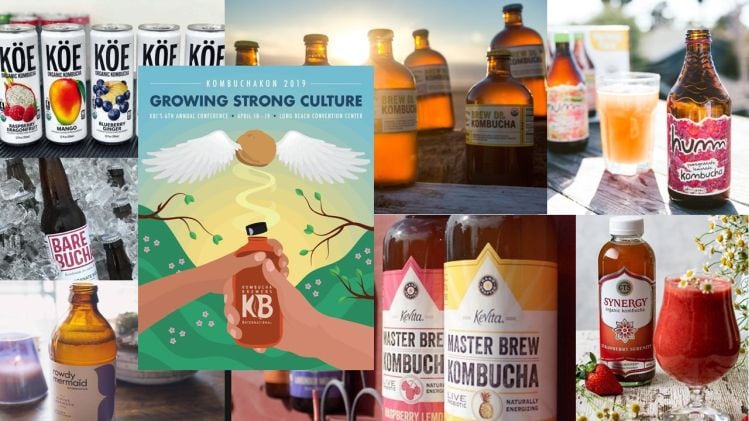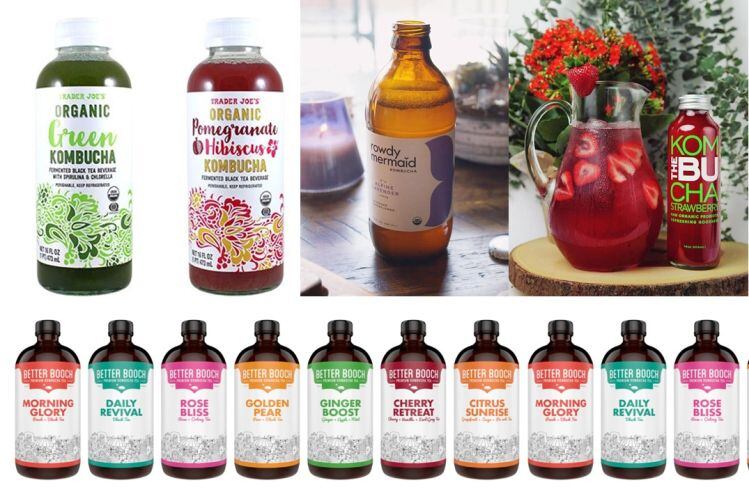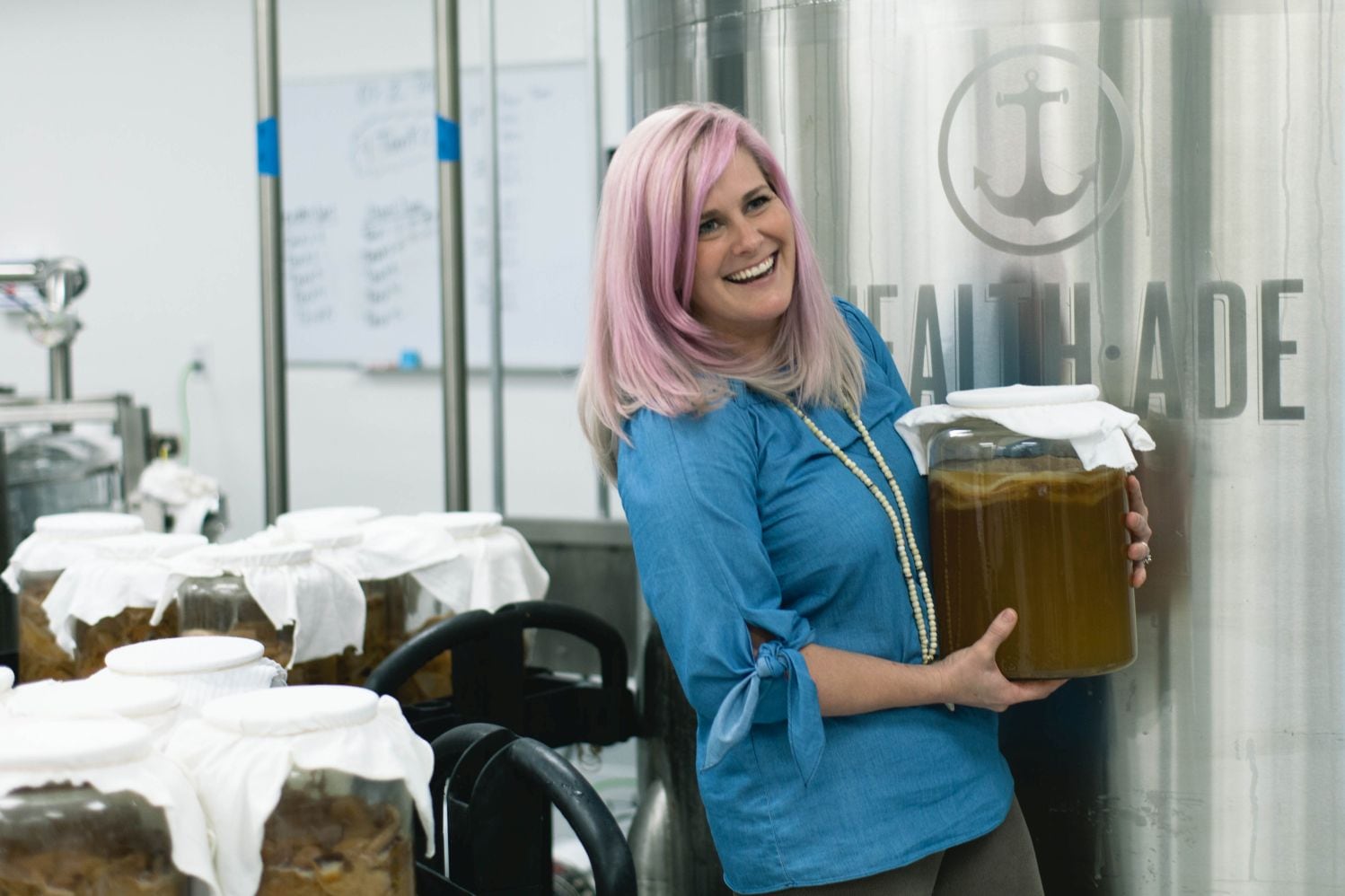Speaking at the Kombuchakon conference in Long Beach on Thursday, Bare Bucha co-owner Toby Tull said that when he and David Aycock started exploring brewing kombucha in Waco, Texas, they struggled to create a product that delivered the quality and flavor they wanted and maintained alcohol levels consistently below 0.5% abv (the threshold above which kombucha is classified as an alcoholic beverage).
Diluting the kombucha post fermentation diluted the flavor and failed to satisfy TTB requirements (which stipulate that the beverage should remain below 0.5% abv throughout the process, from the start of the production process to the end of the shelf life), he said.
Distilling off the alcohol after the fermentation via spinning cone technology was an “industrial” and expensive process "way out of reach" for a start-up, while heat pasteurizing the kombucha to ensure fermentation stopped before it was bottled, would, he felt, “kill the bacteria we know and love.
“We felt like if we can’t produce real [raw, unpasteurized] kombucha that’s compliant, let’s go do something else,” he said.
“After months and months of rigorous testing and research we realized we’ve been doing it [brewing kombucha] all wrong, and that the shape of the fermentation vessel is what matters. We tried dozens and dozens of shapes to figure out how to give advantage to the bacteria.”
Approach cuts the fermentation time almost in half
He explained: “Existing vessels were all designed for yeast [which converts sugar to alcohol] to thrive. We decided we needed a vessel that would allow for the fermentation of [Saccharomyces] yeast and bacteria [the two key components in a SCOBY – a symbiotic culture of bacteria and yeast] at the same time, so we worked with Stout Tanks to develop stackable trays that cut the fermentation time almost in half.”
The stainless steel symbiosis vessels make it easier to maintain optimum fermentation temperatures, enable the cultures to thrive in a lower hydrostatic pressure environment, and enable the bacteria to access more oxygen, which they need to consume alcohol and convert it to organic acids, reducing overall alcohol production and promoting faster and more complete fermentation [ethanol is converted to acetic acid much faster], he said.
“We’ve given the upper hand to the bacteria. The bacteria convert alcohol to acetic acid faster than the yeast can consume the sugar and convert it to alcohol.
"It makes the yeast less efficient and the bacteria more efficient, and it doesn’t involve spending millions of dollars on equipment or compromising your process. As it’s stackable, you get a much higher output per square footage in your brewery and it’s also faster. They are also easy to clean.”
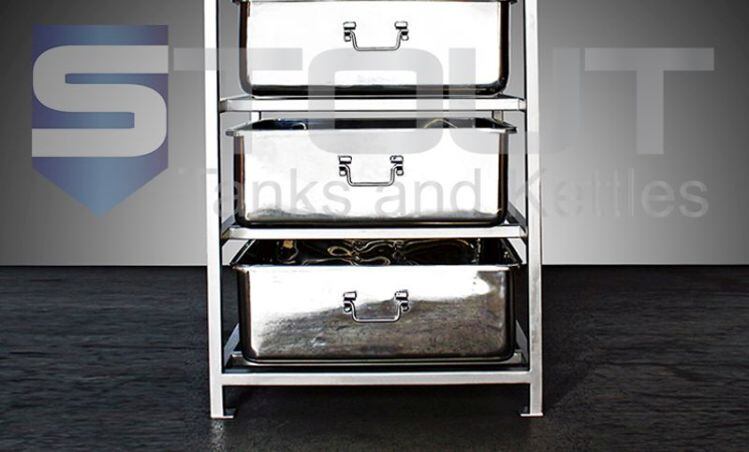
Faster fermentation
Bare Bucha used to take 40 days to get acetic acid levels up to 4140mg/L whereas the new process using the symbiosis fermenters takes 14 days to reach 3,900mg/L and 21 days to get to 5,900mg/L he said. Alcohol levels peaked at 0.455%, whereas they used to be 1.93% abv after the 40-day fermentation.
As for sugar levels, as less of the sugar is converted into alcohol, you can start with less, he said.
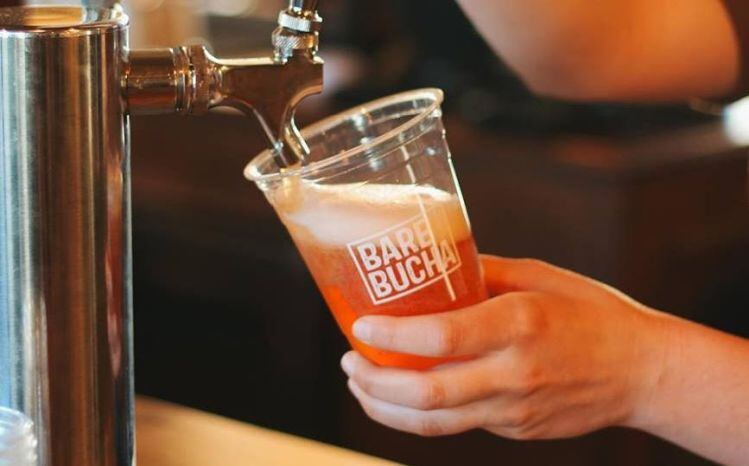
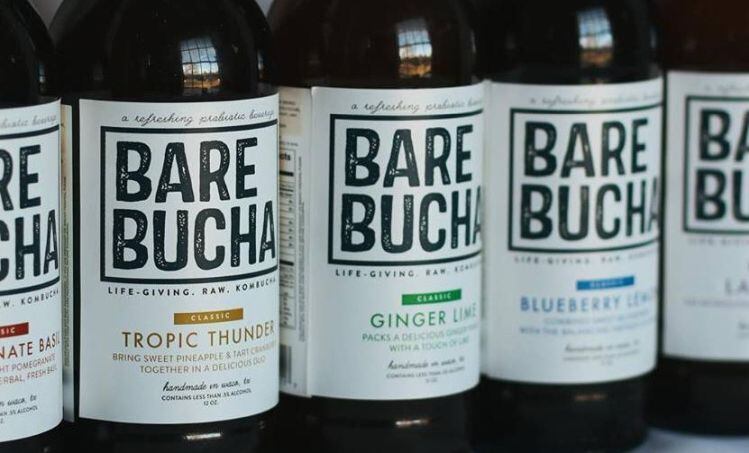
Controlling alcohol: An ongoing challenge for the kombucha industry
Whether 0.5% abv is a reasonable, or outdated and draconian, threshold for non-alcoholic kombucha, depends on your perspective (Kombucha Brewers International believes it should be raised to 1.25%), but as things stand today, said experts at analytical testing labs at Kombuchakon, if you were to pull a random selection of kombucha products off the shelf towards the end of their shelf life at many retailers, you would likely find multiple products with an alcohol content above 0.5%.
Kristan Martinez, analytical lab technician at White Labs, an exhibitor at the event, told FoodNavigator-USA that "Four out of five samples are over 0.5%. Some are over by just a small amount but some have been as high as 2%."
While heat pasteurizing the product or using micro-filtration to remove all the yeast to prevent secondary fermentation in the bottle, distilling off the alcohol post fermentation using spinning cone technology, or simply diluting the liquid to lower the abv prior to bottling can all improve compliance, many brands feel these approaches compromise the final product.
"One of the other challenges is that the SCOBY changes over time," said Martinez. "So after a few months you could find that it's producing more alcohol than it used to if the ratio or composition of yeasts to bacteria has changed, so it's good practice to check it regularly and start over at least every few months. Once a SCOBY leaves the facility [where it was produced] and goes into a kombucha production facility, in six to nine months it could be completely different."
The TTB (Alcohol and Tobacco Tax and Trade Bureau) took a close interest in the alcohol levels in kombucha in 2010, prompting a high-profile withdrawal of products in Whole Foods. However, since then the pressure to address the alcohol compliance issue has been driven by lawsuits, with multiple brands in the space being sued by competitors or by consumers arguing that they are understating alcohol content, said Tull at Bare Bucha.
"The [symbiosis fermenter] removes the liability, because small to medium size breweries don't have these giant warchests to handle millions of dollars in lawsuits, so for those guys this is game-changing.
"This allows kombucha to be the same old thing we've been creating for 2,000 years, but justs makes it compliant."
Alcohol testing in kombucha
According to Gary Spedding, PhD, at Brewing and Distilling Analytical Services, LLC, multiple testing methods for kombucha show surprisingly consistent results, making it, he claims, unlikely that there would be significantly different readings for the same product between, say, GC, HPLC, NMR and Density Meter/Near-Infrared Alcohol detection: "The most variation you typically see is .2%."
"There is rampant speculation in the industry that some components in Kombucha prevent the accurate determination of alcohol," said Dr Spedding. "This is in spite of the fact that several approved and official methods give similar results. Preliminary tests in our facility with spiking of known amounts of alcohol into Kombucha samples indicate no masking of this added alcohol when measured via densitometry and an NIR instrument.
"Our testing shows that many kombuchas are in the 0.875% to 1.5% abv range and some are above this level. Nothing is preventing accurate readings in our opinion with official methods of analysis."
Asked about GCMS [gas chromatography, mass spectrometry) testing in particular, he said that if anything, this method very slightly under-reports alcohol content, so if testing using this approach shows products to be at 1% abv or more, then companies need to address this asap.
While fermentation in the bottle is an issue for kombucha if the cold chain is broken, many products are already above the .5% range from the outset, he claimed. "Lots of them we have tested were like that [well above .5%] from day one."

